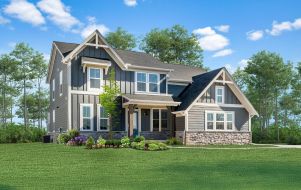Secret Forest Pavilion in South Korea Features Mirrored Walls and Corten Steel Design
NEXT Architects proudly presents the Secret Forest Pavilion, nestled amidst the verdant landscapes of South Korea, as part of the esteemed Public Art Project Anyang 7 (APAP7). With its innovative design, this pavilion offers visitors a unique vantage point, reshaping their perspective on the surrounding environment.
Design Philosophy
At the heart of NEXT Architects' design philosophy lies a commitment to exploring new perspectives and enhancing user experiences. Drawing inspiration from previous projects like the Lucky Knot, The Elastic Perspective, and Maaspoints: Water Woods, the Secret Forest Pavilion continues this tradition by redefining the relationship between architecture and nature.
Perched atop Samseon Mountain, the Secret Forest Pavilion is a focal point within the Anyang Public Art Project 7. The pavilion invites visitors to see the landscape in a new light by enclosing a portion of the forest within its structure. As visitors move closer to the central space, they are enveloped by the solitude of the trees, becoming part of a hidden forest revealed by mirrored walls.
.
Materials and Aesthetics
The pavilion's design will be able to organize a mysterious link between the inner and the external place like never before, or in simpler words, it will be a puzzle. It is corten steel, selected due to its strength combined with extra flexibility, that stands for the main structure of this pavilion and is integrated harmoniously into the surrounding space. With aging traces of use, the steel develops a warm brown-orange patina that suggests the original deforestation process and, hence, the contemporary atmosphere. An endless stretch of reflective stainless steel gives a feeling of strolling through the forest for eternity. Various people will enjoy it as a visual effect.
The Psyche Forest Portal's interactive pathway tests the visitors' navigational skills as they wander through its elliptical pattern. From the entrance, visitors are presented with a choice: looking inwards at my love for the limited space or looking outwards at the beautiful panoramic views of nature is most worthwhile. When he surmounts towards the center and begins to rise, their glances are focused either on the sky or on the scattered forest underneath.
Public Art Project Anyang (APAP)
The Public Art Project Anyang (APAP) is an influential point where artists and architects can explore the possibilities of a recreated urban landscape in streets and public spaces. Those new environments will create a place for people to meditate on the links between art and the community. Every year, well-known people, including significant representatives like Kengo Kuma, MASS Studies, and MVRDV, have contributed to the unique context of artistic manifestation in Anyang.
Along with revealing Secret Forest Pavilion, NEXT, architects continue challenging the public art borders by attracting locals with a meditative experience encompassing nature and architecture. Through this and many other projects, the direction of the Korean cultural landscape toward increased diversity and openness is opened, and where art and architecture merge, it will charm the residents and visitors.
Related Article : 10 Small Houses With Surprisingly Expansive Interiors












